Mechanical cylinder bureau c. 1785
148.0 x 142.0 x 83.0 cm (whole object) | RCIN 293
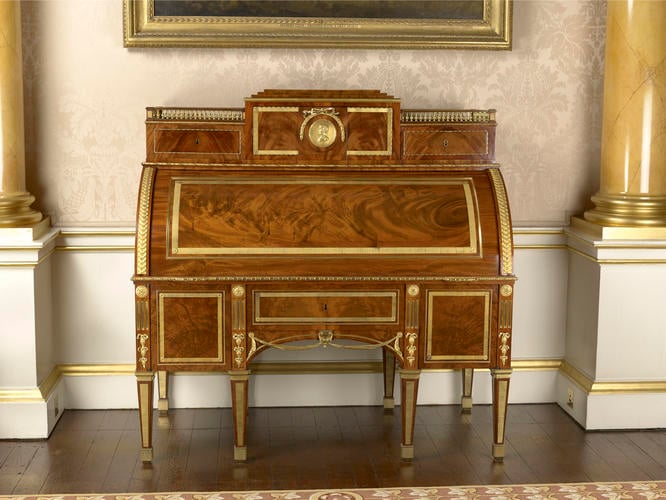
Attributed to David Roentgen (1743-1807)
Mechanical cylinder bureau c. 1785

Attributed to David Roentgen (1743-1807)
Mechanical cylinder bureau c. 1785
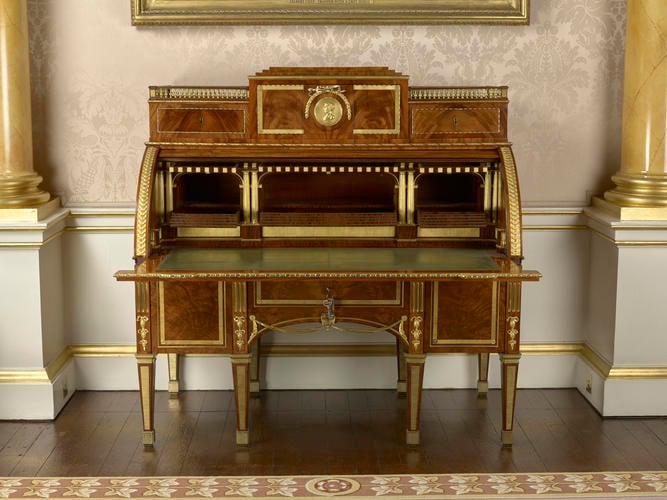
Attributed to David Roentgen (1743-1807)
Mechanical cylinder bureau c. 1785

Attributed to David Roentgen (1743-1807)
Mechanical cylinder bureau c. 1785
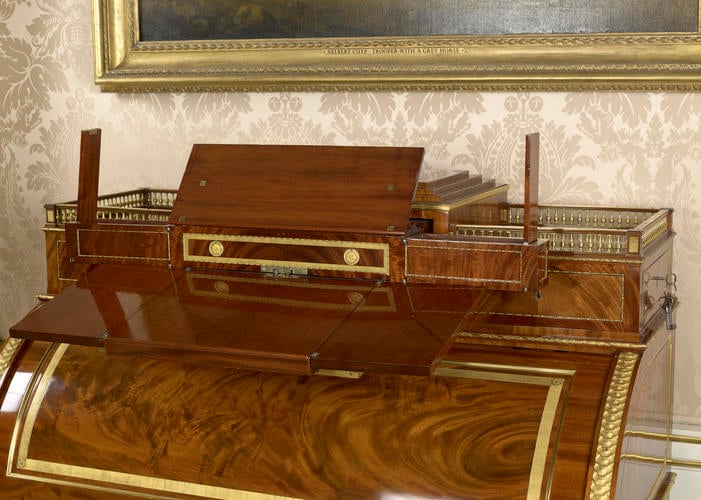
Attributed to David Roentgen (1743-1807)
Mechanical cylinder bureau c. 1785
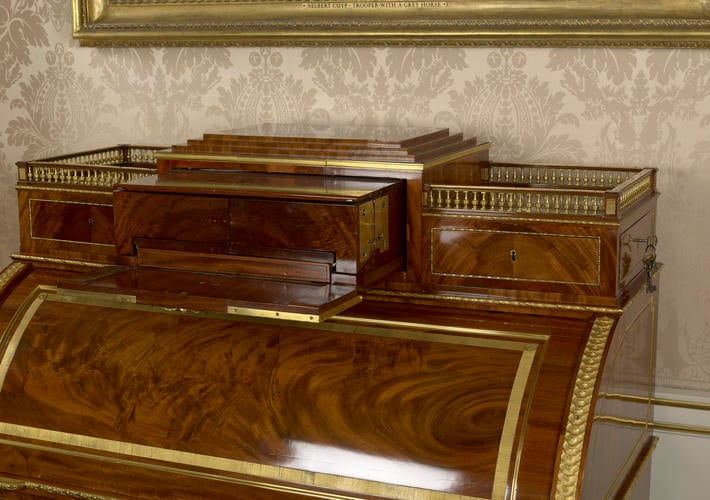
Attributed to David Roentgen (1743-1807)
Mechanical cylinder bureau c. 1785
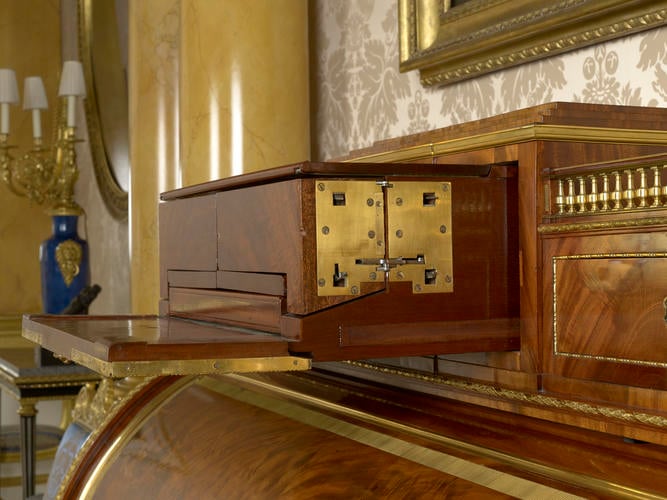
Attributed to David Roentgen (1743-1807)
Mechanical cylinder bureau c. 1785
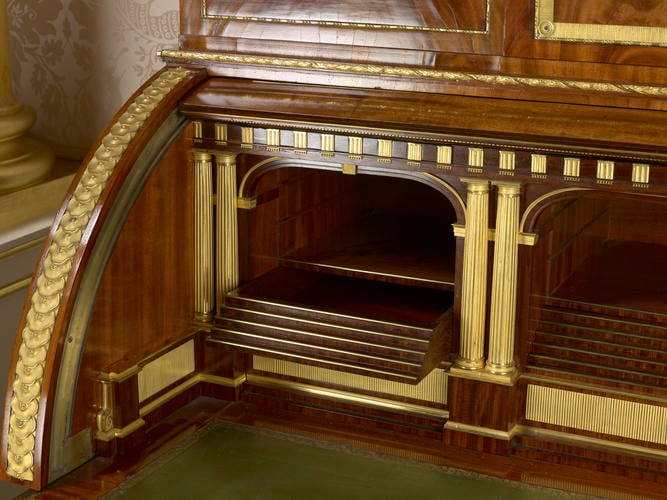
Attributed to David Roentgen (1743-1807)
Mechanical cylinder bureau c. 1785

Attributed to David Roentgen (1743-1807)
Mechanical cylinder bureau c. 1785
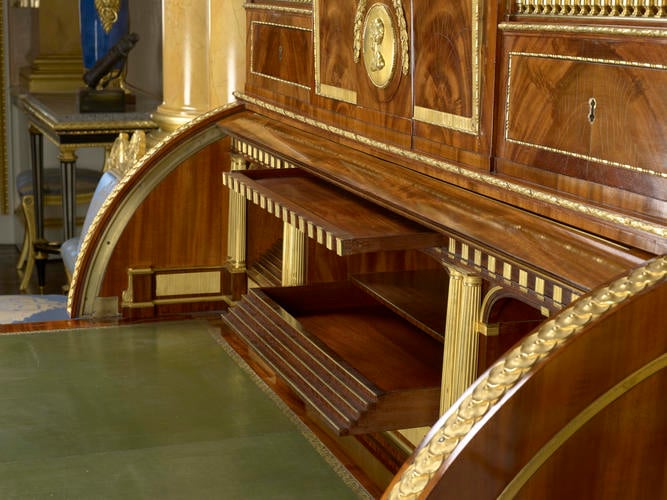
Attributed to David Roentgen (1743-1807)
Mechanical cylinder bureau c. 1785

Attributed to David Roentgen (1743-1807)
Mechanical cylinder bureau c. 1785

Attributed to David Roentgen (1743-1807)
Mechanical cylinder bureau c. 1785
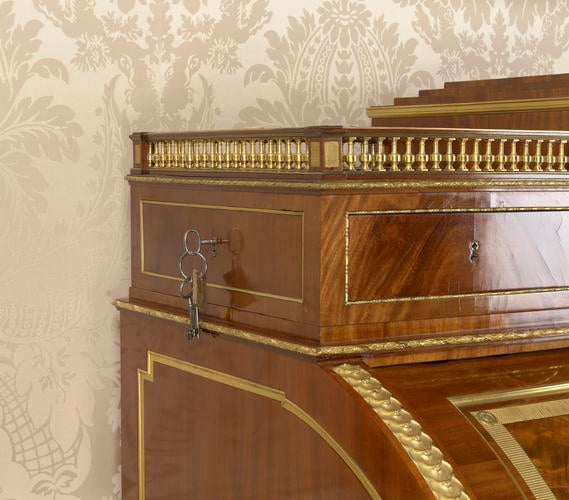
Attributed to David Roentgen (1743-1807)
Mechanical cylinder bureau c. 1785


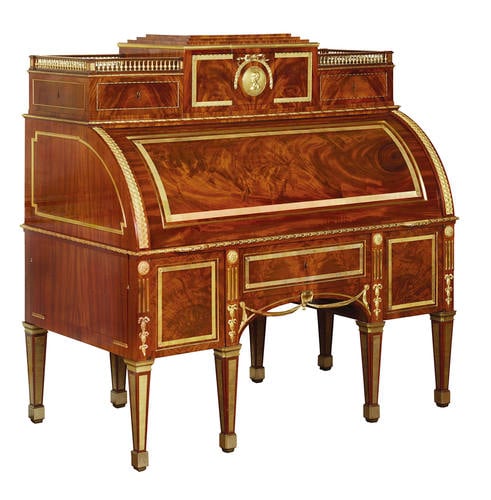












-
Roll-top desk of oak veneered with mahogany and with chased gilt bronze mounts of striated bands, laurel swags, flutes, rosettes, bands of imbricated disks and a medallion, possibly of Denis Diderot. The break-front superstructure, with hinged front panel flanked by two drawers, contains a reading stand and drawers, which are released when a key is turned. The roll-top conceals a nest in the form of three pillared arches leading to steps, incorporating six secret drawers in two tiers. The lower section, supported on eight straight tapering legs, contains five drawers, the outer pairs concealed behind hinged doors.
The desk can be attributed to David Roentgen (1743-1807), the son of Abraham, who took over his father's business at Neuwied am Rhein in about 1768. David Roentgen developed mechanical pieces of furniture of such precision and technical perfection that his fame spread throughout Europe. He travelled the courts of Germany on sales promotion tours; he visited France where he was received at court and was admitted in 1780 to the Guild of Parisian furniture makers; he embarked on the long journey to Russia in 1783 with a consignment of furniture which he was able to sell for the most part to Catherine the Great who was to prove his most lavish patron.
From 'Carlton House: The Past Glories of George IV's Palace', London 1991.Provenance
This desk was purchased in Paris for George IV by François Benois in 1820 at a cost of £275 (RA GEO/MAIN/25366). Jutsham, in his entry recording its arrival at Carlton House on 12 May 1820 - it came in six cases which were opened on 13 May - noted that it was said to have belonged to Louis XIV (Jutsham Recs II, pp.98, 112). It is more likely however, that it belonged to the comte de Provence, later Louis XVIII.
It was placed in the King's Ante Room on the Attic Floor at Carlton House. By the time the palace was emptied of its contents in late 1826 it had been moved to the Pediment Stores Attic Floor (Carlton House Inventories, Vol.J, p.268). -
Creator(s)
(nationality)Acquirer(s)
-
Medium and techniques
Measurements
148.0 x 142.0 x 83.0 cm (whole object)








